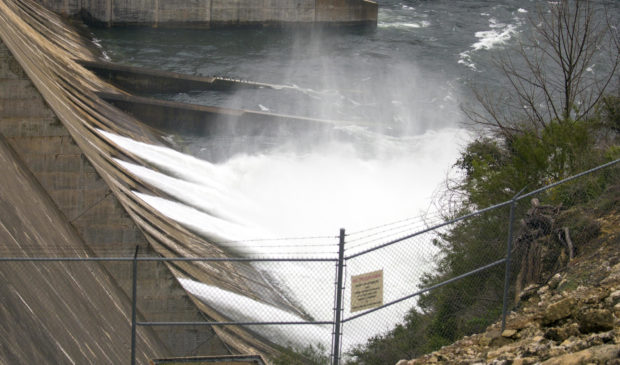City could store three Lake Austins’ worth of water underground by 2040
Monday, August 31, 2020 by
Mose Buchele, KUT Austin gets all of its water from the Highland Lakes, but that might not always be the case. The city recently took a first step toward storing massive amounts of water underground. If the plan works, it could help Austin survive as the climate crisis threatens traditional water supplies.
With this technique, called aquifer storage and recovery, or ASR, utilities pump water into underground aquifers to save for later. Aquifer storage and recovery is touted as a good way to take advantage of weather extremes, capturing excess water in times of flooding to use in times of drought.
Kevin Critendon, an assistant director for Austin Water, said the technique could help the city deal with the impacts of drought or “system upset” in the Highland Lakes.
Weather is getting more extreme because of climate change. The lakes already got perilously low thanks to drought in 2011 and dangerously muddy because of floods in 2018.
“If we had a system like (ASR) in place, we could have just used water that had already been treated and was stored in an ASR storage facility,” Critendon said.
Another benefit of storing water underground is that it does not evaporate under the hot Texas sun. Lake Travis, where Austin currently stores much of its water, loses between 7 and 9 inches a month in surface evaporation in the summertime.
Critendon said aquifer storage and recovery is a big undertaking but not uncommon.
“Even in Texas, there are three sizable ASR facilities that are already in operation,” he said. “The oldest of which is in the city of El Paso dates back to 1995.”
Austin’s first step is to find the right aquifer. To do that, City Council approved a $6 million contract with an engineering firm last week. The firm will survey nearby aquifers to see which could be a good fit. One likely candidate is the Carrizo-Wilcox Aquifer that runs near Travis County’s western border, but Critendon said the firm will look at others as well.
Once a good location is determined, engineers will eventually dig test wells to pump water in and out to see how it reacts with the aquifer. If all goes according to plan, Austin will be storing 60,000 acre-feet of water underground by 2040. Lake Austin holds around 22,000 acre-feet of water.
While completion of Austin’s underground storage system is still at least 20 years away, the city has already won praise for its efforts.
State climatologist John Nielsen-Gammon recently published a paper with other researchers on Texas water policy. They warned of the arrival of more extreme droughts throughout the century that could include decades-long “megadroughts.”
“There’s some question about whether we should actually refer to what’s coming as a drought,” Nielsen-Gammon told KUT when the paper was published. “Because a drought is something that happens temporarily and goes away. And we’re talking about something that is effectively going to be permanent – at least in terms of human life span.”
The paper singled out Austin as a Texas city that is working proactively to prepare for such events with projects like underground storage.
This story was produced as part of the Austin Monitor’s reporting partnership with KUT.
The Austin Monitor’s work is made possible by donations from the community. Though our reporting covers donors from time to time, we are careful to keep business and editorial efforts separate while maintaining transparency. A complete list of donors is available here, and our code of ethics is explained here.
You're a community leader
And we’re honored you look to us for serious, in-depth news. You know a strong community needs local and dedicated watchdog reporting. We’re here for you and that won’t change. Now will you take the powerful next step and support our nonprofit news organization?



